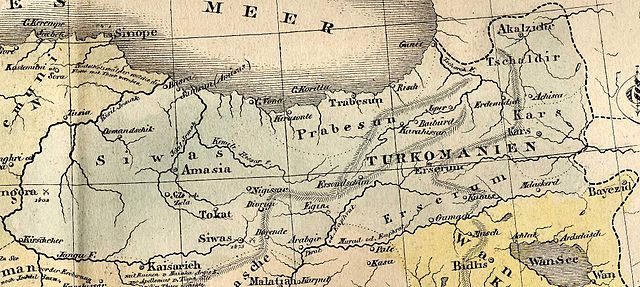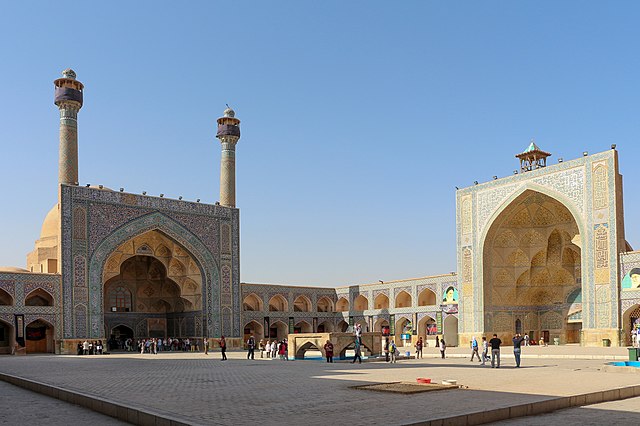Turkoman, also known as Turcoman, was a term for the people of Oghuz Turkic origin, widely used during the Middle Ages. Oghuz Turks were a western Turkic people that, in the 8th century A.D, formed a tribal confederation in an area between the Aral and Caspian seas in Central Asia, and spoke the Oghuz branch of the Turkic language family.
Enthroned figure usually identified as the last Oghuz Turk Seljuk Empire ruler Tughril III (1176–1194), from Rayy, Iran. Philadelphia Museum of Art.
Turkomania of the Ottoman Empire
Medieval Qara Qoyunlu Turkmen helmet
Jameh Mosque of Isfahan, built during the Seljuq era (early 12th century)
The Oghuz Turks were a western Turkic people who spoke the Oghuz branch of the Turkic language family. In the 8th century, they formed a tribal confederation conventionally named the Oghuz Yabgu State in Central Asia. Today, much of the populations of Turkey, Azerbaijan and Turkmenistan are descendants of Oghuz Turks. Byzantine sources call them Uzes. The term Oghuz was gradually supplanted by the terms Turkmen and Turcoman by 13th century.
Enthroned figure usually identified as the last Oghuz Turk Seljuk Empire ruler Tughril III (1176–1194), from Rayy, Iran. Philadelphia Museum of Art.
The Old World in 600 AD
Portrait of Nasir al-Din Artuq Arslan, an Oghuz Döğer ruler of the Artuqid dynasty, Mardin, dated AH 611 (1214-5 CE)
Head of male Seljuk royal figure, 12–13th century, from Iran.







